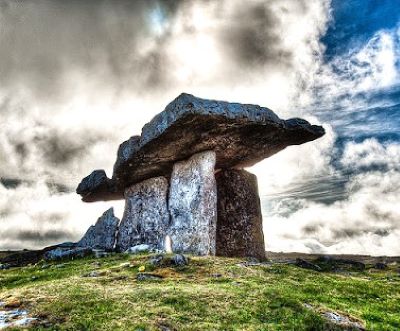
Ireland, renowned for its captivating natural beauty, is also a treasure trove of prehistoric wonders. Delving into its ancient past reveals a rich tapestry of human activity, where tales of the first settlers intertwine with the mysteries of long-forgotten times. Prior to the iconic monuments like the Boyne Valley complex in Co. Meath or the Carrowkeel Cemetery in Co. Sligo, Ireland was home to a distinct group of inhabitants: the Mesolithic hunter-gatherers.
The Mesolithic Period: Ireland’s Early Inhabitants
Approximately 10,000 years ago, as the ice sheets retreated and gave way to a more hospitable environment, Ireland experienced its first human colonization. These individuals arrived during the Mesolithic period, a span within the Stone Age characterized by unique adaptations and evolutions in human behavior. Unlike subsequent generations who constructed grand monuments and edifices, these Mesolithic inhabitants had a distinct lifestyle. They neither built colossal structures nor resided in extensive, permanent communities, which has led to challenges in piecing together a comprehensive understanding of their existence.
Hunter-Gatherers: A Life Synonymous with Nature
The Mesolithic inhabitants of Ireland are commonly known as hunter-gatherers due to their sustenance strategies. Their lives revolved around exploiting the landscape’s bounties in accordance with nature’s rhythm. The cyclical patterns of nature determined their movements and settlements. Aware of the seasons, they adeptly capitalized on available resources. For instance, during specific seasons when salmon were in abundance or when hazelnuts ripened, these groups positioned themselves to harness these resources. Temporary settlements, such as the encampment found at Lough Boora, Co. Offaly, which dates back to around 6500 BC, underline their transient nature.
 Material Evidence: Glimpses into the Mesolithic Era
Material Evidence: Glimpses into the Mesolithic Era
While the robust monumental structures we associate with ancient civilizations are missing from this epoch, we still possess traces of the Mesolithic era’s material culture. The longevity and vulnerability of organic materials have resulted in limited direct artifacts, yet certain discoveries have provided vital clues. One such artifact is the 7,000-year-old fish trap unearthed at Clowanstown, Co. Meath. This meticulously crafted piece underlines the ingenuity and expertise of its creators.
The Importance of Skill Transmission
With the Mesolithic era’s tangible evidence limited, piecing together the nuances of these communities’ day-to-day existence becomes an endeavor of educated guesswork. However, a few tenets become evident. The prowess displayed in the Clowanstown fish trap, among other remnants, suggests a population deeply skilled in crafting and utilizing resources. Such aptitude was unlikely to be restricted to isolated individuals. Instead, these skills, particularly in understanding nature’s timetable and efficiently procuring food, would have been integral to their way of life. It becomes clear that knowledge wasn’t merely individual acquisition but a community asset. The details of salmon migrations, the ripening patterns of berries, and other essential information were transmitted across generations. This continuous process of imparting knowledge, essentially an educational system, was a cornerstone of their survival strategy. This education wasn’t formalized in the way modern societies understand it, but it was intricate, specialized, and effective.
Insights from Limited Traces
The narrative of the Mesolithic hunter-gatherers, while constructed from sporadic evidence, paints a portrait of a society deeply connected with its environment. Through their nomadic patterns, tool usage, and skills transmission, they exemplify early human adaptability. From the rich tapestry of prehistoric relics across Ireland, these inhabitants may not have left towering monuments, but their legacy is significant. It’s a testament to humankind’s resilience, adaptability, and unyielding drive to harness the environment, laying the foundation for the complex societies that would soon emerge on the Emerald Isle.
While there is much yet to uncover about the Mesolithic hunter-gatherers of Ireland, the existing fragments of evidence provide invaluable insights into a time when humanity and nature existed in a synchronized dance. As archaeological techniques progress, perhaps more secrets of these early inhabitants will come to light, enriching our understanding of the human journey on the verdant landscapes of Ireland.




















Leave a Comment